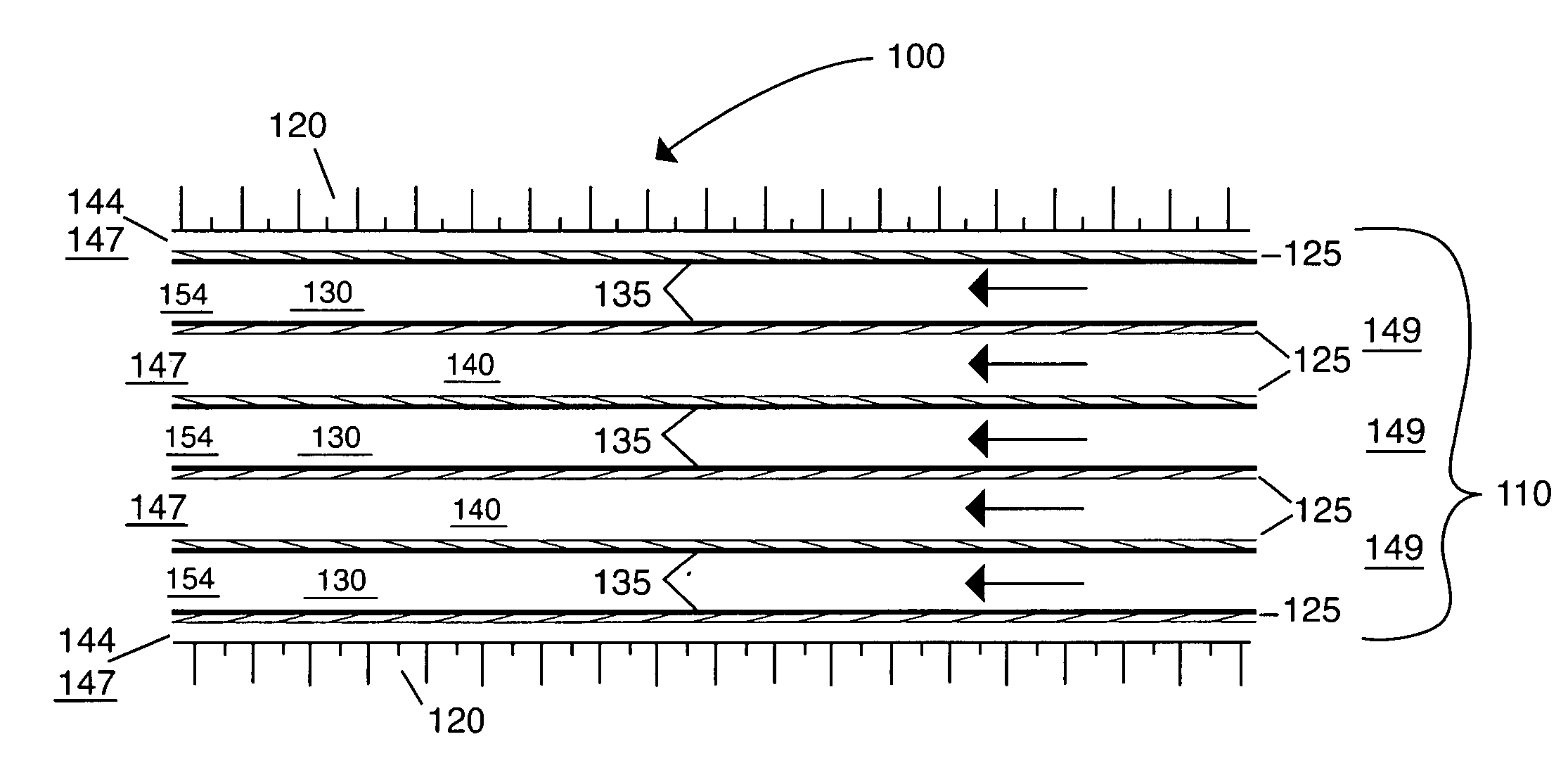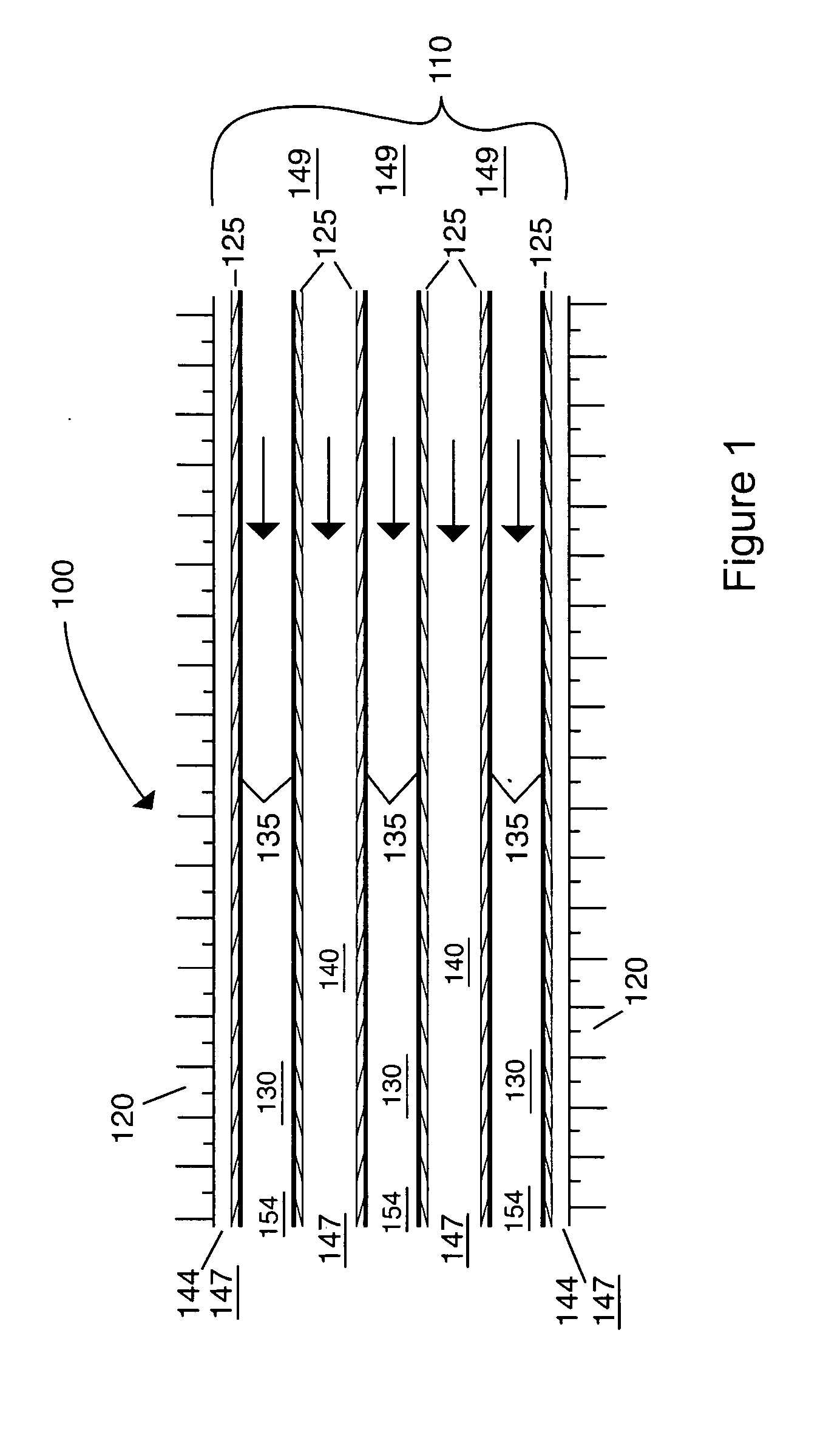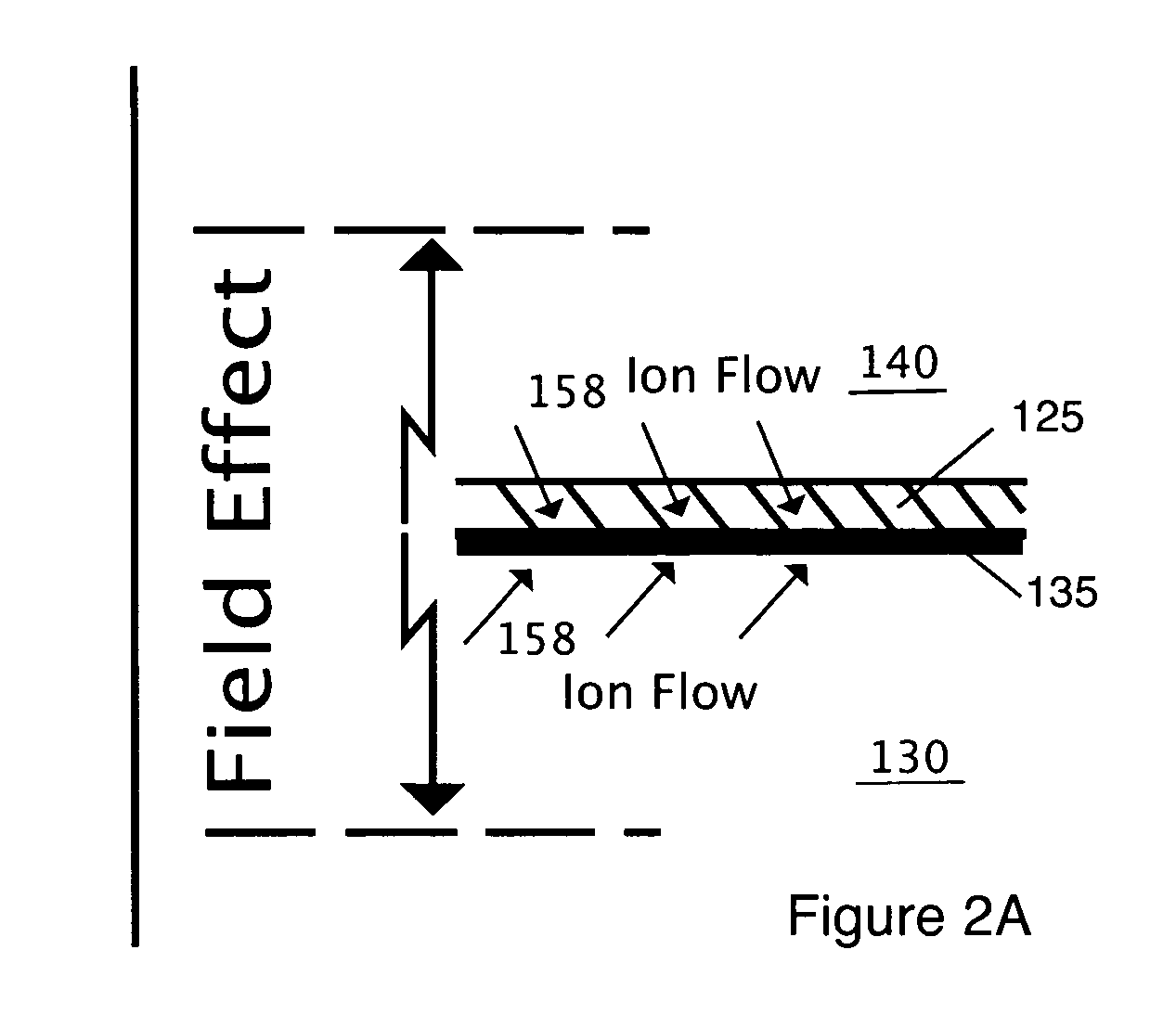Segregated flow, continuous flow deionization
a technology of deionization and flow, applied in the direction of refrigeration components, electrodialysis, diaphragms, etc., can solve the problem that none of the deionized product water is used for flushing ion concentrates
- Summary
- Abstract
- Description
- Claims
- Application Information
AI Technical Summary
Benefits of technology
Problems solved by technology
Method used
Image
Examples
Embodiment Construction
[0034] A multi-channel, continuous flow deionization apparatus according to the invention is illustrated in FIG. 1. Apparatus according to the invention may be configured as an array of planar channelways, as illustrated in FIG. 1, or it may be configured as a series of nested circular or oval, tubular channelways or some other disposition of channelways. The particular geometry of the channelways may vary, but the fundamental relationship is that there are two sets or types of channelways (as explained in greater detail below) that alternate with or are “interlaced” with each other so that the channelways of one type are interposed between and therefore bounded by the channelways of the other type. The channelways 140 in one set of channelways—the “deionized channelways”—carry water that is being deionized (deionized or “product water”), and the channelways 130 in the other set of channelways—the “concentrate channelways”—carry “flush water” or “concentrate water,” i.e., water that...
PUM
| Property | Measurement | Unit |
|---|---|---|
| surface area | aaaaa | aaaaa |
| electrically | aaaaa | aaaaa |
| electrically attractive | aaaaa | aaaaa |
Abstract
Description
Claims
Application Information
 Login to View More
Login to View More - R&D
- Intellectual Property
- Life Sciences
- Materials
- Tech Scout
- Unparalleled Data Quality
- Higher Quality Content
- 60% Fewer Hallucinations
Browse by: Latest US Patents, China's latest patents, Technical Efficacy Thesaurus, Application Domain, Technology Topic, Popular Technical Reports.
© 2025 PatSnap. All rights reserved.Legal|Privacy policy|Modern Slavery Act Transparency Statement|Sitemap|About US| Contact US: help@patsnap.com



